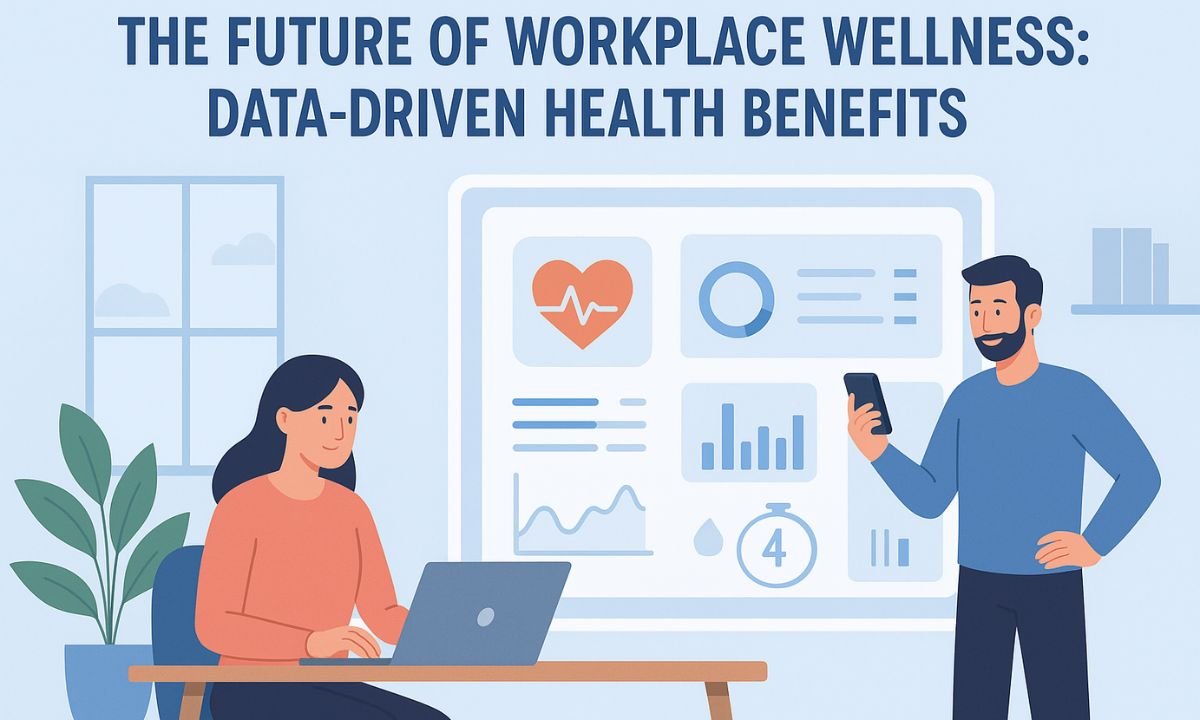Workplace wellness has come a long way from free gym memberships and fruit baskets. Today, it’s all about data-driven health benefits that help both employees and companies thrive. With technology shaping every part of our lives, it’s no surprise that health and wellness programs are becoming smarter, more personal, and more effective.
What Is Workplace Wellness?
Workplace wellness simply means programs or initiatives created by employers to help employees stay healthy, happy, and productive. It’s not just about physical health anymore—it includes mental well-being, emotional balance, and lifestyle habits. The goal? A healthier team that performs better and stays longer.
The Shift Toward Data-Driven Wellness Programs
In the past, companies used a one-size-fits-all approach to wellness. Everyone got the same gym discount or meditation app. But now, data is changing the game. Data-driven wellness uses information—like fitness tracker stats, surveys, and health screenings—to personalize support for each employee.
How Data Shapes Employee Health Insights
Data helps employers see patterns and make smarter decisions. For example, if most employees show high stress levels or poor sleep habits, companies can introduce targeted programs like stress management workshops or flexible schedules. It’s about being proactive, not reactive.
The Role of Wearable Devices in Tracking Health
Smartwatches and fitness trackers are not just cool gadgets—they’re powerful health tools. They can measure heart rate, sleep patterns, activity levels, and even oxygen levels. Employers can use this anonymous, aggregated data to understand workforce health trends and improve wellness offerings.
AI and Predictive Analytics in Wellness Programs
Artificial intelligence (AI) is making wellness programs smarter than ever. AI tools can predict health risks based on behavior patterns and medical data. For instance, if an employee’s data shows low activity and poor sleep, the system can suggest small lifestyle changes before health issues arise.
Personalized Health Benefits for Employees
Every employee is different—so why should their wellness plans be the same? Data allows companies to create personalized wellness experiences. Some employees may need mental health resources, while others might benefit from fitness coaching or nutritional support. Customization keeps engagement high and results real.
Mental Health and Stress Tracking
The conversation around mental health has never been more important. Data-driven tools can monitor signs of burnout or stress through digital surveys, mood-tracking apps, or even work pattern analysis. Employers can then provide early support like counseling, flexible hours, or wellness breaks.
Remote Work and Its Impact on Wellness Data
With remote and hybrid work models, tracking wellness has become more challenging—but also more data-rich. Virtual wellness platforms collect insights from digital activities, helping companies understand how remote workers are doing and where they may need extra support.
Encouraging Healthy Lifestyle Choices Through Data
Data doesn’t just track—it motivates. Many wellness programs now use gamification and rewards to make healthy habits fun. Employees can earn points for hitting step goals or maintaining sleep routines, creating a friendly sense of competition that keeps everyone active.
Privacy and Ethical Concerns in Health Data Collection
Of course, collecting health data raises serious privacy questions. Employees must trust that their personal information is safe and used ethically. Transparency is key—companies should clearly explain how data is used and ensure anonymity wherever possible.
How Companies Benefit from Data-Driven Wellness
Data-driven wellness programs aren’t just good for employees—they’re good for business too. Healthy employees mean fewer sick days, higher productivity, and stronger morale. Plus, data helps companies measure the success of wellness initiatives and continuously improve them.
Case Studies of Successful Wellness Programs
Many top organizations are already leading the way. For example, companies using data analytics have reported improved engagement, reduced healthcare costs, and happier teams. The success stories prove that wellness and data can go hand in hand when done thoughtfully.
The Future: Integrating Technology and Human Empathy
While technology and data are powerful, the heart of wellness is still human. The future of workplace wellness lies in combining data insights with empathy and care. After all, behind every data point is a real person who needs understanding, not just algorithms.
Conclusion
The future of workplace wellness is bright—and undeniably digital. By using data to understand, predict, and improve employee well-being, companies can create healthier, happier, and more engaged teams. It’s not just about technology; it’s about building workplaces that truly care.
FAQs
What does data-driven wellness mean?
It means using data and technology to personalize and improve employee health and wellness programs.
Are data-driven wellness programs safe for privacy?
Yes, when handled responsibly with anonymous and transparent data use policies.
How do wearables help in workplace wellness?
They track activity, sleep, and health metrics that help shape personalized wellness plans.
Can small businesses use data-driven wellness programs?
Absolutely. Even small teams can use simple tools like surveys or fitness apps to collect insights.
What’s the next big trend in workplace wellness?
AI-powered health predictions and personalized wellness plans based on real-time data.










